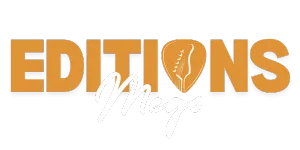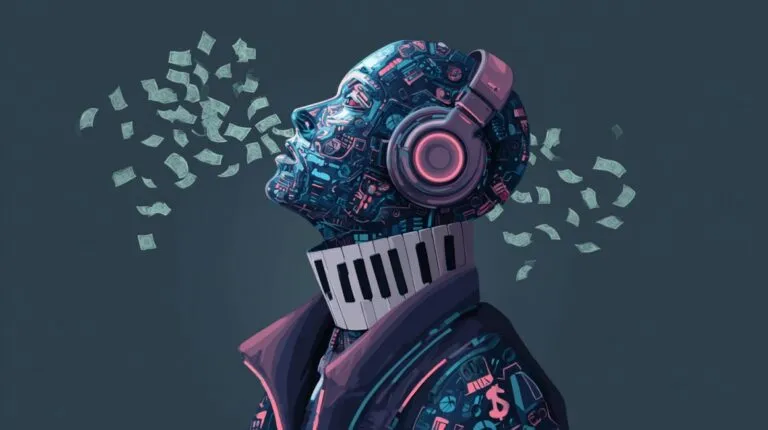Learning to play a musical instrument can be exciting, frustrating, and rewarding.
Setting realistic expectations from the beginning plays a key role in staying motivated.
Several factors shape how long it takes to learn: the instrument’s complexity, the consistency of practice, and personal goals, whether playing for fun or aiming for professional success.
Music is not a destination but a lifelong process.
Progress happens in layers, and each phase brings its challenges and milestones.
Table of Contents
ToggleFactors That Affect How Long It Takes to Learn an Instrument

Learning a musical instrument is never simply about talent.
Several core factors influence how fast someone can move from beginner to confident performer.
Practice habits, the guidance received, personal drive, and even age shape the learning curve.
Time Commitment
Regular practice shapes progress more than anything else. Building a routine of consistent engagement forms the bedrock for improvement.
Even 20 minutes per day yields better results than occasional three-hour marathons with no follow-up.
Learners can be grouped into three general categories based on how much time they devote:
- Casual learners: Often practice 2–4 hours per week, learn at a slower pace, typically for personal enjoyment.
- Structured learners: Follow weekly plans, attend lessons, and commit to 4–7 hours of focused practice per week.
- Immersive learners: Engage in daily practice, sometimes exceeding 10 hours per week, and often attend music schools or conservatories.
Long-term improvement closely mirrors the consistency and structure of one’s routine.
Gaps between sessions lead to skill decay, while regular sessions build muscle memory and confidence.
Quality of Instruction

Having an experienced teacher can mean the difference between struggling alone and receiving timely corrections that prevent long-term frustration.
Benefits of high-quality instruction include:
- Early correction of bad habits
- Clear milestones and structured progress
- Tailored exercises based on student needs
- Encouragement and accountability
Self-teaching has value, especially with today’s resources, but often comes with pitfalls.
Learners without regular feedback risk plateauing or picking up inefficient techniques.
Personal Goals and Motivation
The intent behind learning shapes the entire process.
Some learners struggle to maintain motivation due to time constraints, challenging subjects, or external obligations like work or family.
In such cases, leveraging academic support platforms that do my homework can help alleviate pressure and keep students on track with their learning goals, especially when used as supplementary assistance.
Goal clarity influences how much effort gets invested and how fast progress is made.
Goals often fall into two main categories:
- Short-term: Learning specific songs, preparing for a recital, joining a band.
- Long-term: Becoming a skilled performer, earning qualifications, and teaching music.
Motivation also fluctuates over time. Passion may spike at the start, but needs nurturing. Setting small milestones maintains momentum and provides rewarding moments along the way.
Age of the Learner

Children tend to pick up basic techniques more quickly due to high neuroplasticity. They are more adaptable and often less self-conscious, allowing them to absorb new patterns without hesitation.
Adults offer different advantages. They usually have better focus, patience, and the ability to stick with long-term goals.
However, they might need more time to develop muscle memory and coordination.
Age-based considerations include:
- Children: Rapid learning, higher flexibility, often need parental support.
- Teens: Strong commitment possible, especially when aligned with school programs or peer activities.
- Adults: Greater discipline, clearer goals, more likely to schedule regular practice.
- Seniors: More free time, high motivation, must pace physical exercises to prevent strain.
Time availability also plays a role. Adults with flexible schedules can sometimes learn faster than kids with packed school days. Consistency beats age in most cases.
“Learning” vs. “Mastering” an Instrument

Basic proficiency allows someone to play simple songs and perform with confidence in casual settings. Intermediate fluency includes reading sheet music, playing moderately complex pieces, and using expressive techniques.
Mastery reaches into professional territory. At this level, performers interpret music, express emotion through playing, and command an audience. The “10,000 hours rule” has evolved—many professionals today reach high-level performance with 2,000 to 5,000 hours of focused, high-quality practice.
Physical vs. Theoretical Learning
Developing physical technique means training the body to respond instinctively: correct posture, finger positioning, breath control, and coordination. This takes time and repetition.
Equally important is music theory—reading notation, understanding rhythm, and interpreting musical phrasing. Both dimensions must grow together to create a well-rounded musician.
Instrument-Specific Time Comparisons
Each musical instrument comes with its own learning curve, influenced by physical requirements, technique complexity, and the breadth of skills needed for fluency.
Some instruments demand fine motor control and exceptional pitch sensitivity, while others challenge coordination, breath support, or mental multitasking.
Strings: Violin, Viola, Cello, Double Bass
String instruments are among the most technically demanding, especially during the early stages. Producing clean sound without frets requires precise finger placement and refined bowing technique. Beginners often struggle with tone control and pitch accuracy before building confidence.
Violin presents additional pressure due to high competition in classical training environments.
Viola uses similar techniques but benefits from a slightly more forgiving tonal register. The cello offers a more ergonomic playing position and deeper tone.
The double bass introduces larger finger spacing but tends to be more accessible for adult beginners due to scale and role flexibility.
Key traits include:
- No frets, requiring pitch precision
- Left-hand strength and bow control
- Early difficulty with sound production
- High competition in violin performance tracks
- Ergonomic advantages in cello and double bass
Piano and Keyboard Instruments

Piano is one of the easiest instruments to begin but one of the hardest to master. Visible keys and fixed tuning allow quick progress in playing basic melodies.
Even young learners can play recognizable tunes early on, which boosts motivation.
Developing beyond the beginner level involves coordinating both hands independently, reading complex notation, and mastering expression across a wide range of dynamics.
Expectations grow significantly at intermediate and advanced levels, particularly in classical or jazz settings.
Key traits include:
- Fixed pitch and visual key layout
- Solo, ensemble, and accompaniment roles
- High levels of memorization
- Emphasis on dynamics and phrasing
- Long-term complexity in advanced repertoire
Woodwind Instruments: Flute, Clarinet, Oboe, Bassoon, Saxophone
Woodwinds cover a wide range of difficulty. The flute and clarinet are often recommended for beginners due to manageable fingerings and accessible size.
Oboe and bassoon, with their double reeds, introduce a high degree of embouchure control and air support needs.
Breath management plays a central role in sound production across all woodwinds.
Fingering systems become increasingly complex with instruments like the bassoon. Saxophone balances playability with expressive range, making it popular across genres.
Key traits include:
- Embouchure development critical to tone
- Breath control central to expression
- Reeds require ongoing maintenance (clarinet, saxophone, oboe, bassoon)
- Varying difficulty in fingering complexity
Brass Instruments: Trumpet, French Horn, Trombone, Tuba

Brass instruments require consistent embouchure training and controlled breath support.
Producing accurate pitch is tied to lip tension and air pressure, which takes months of repetition to refine. Early sound production can be physically exhausting, especially for younger learners.
French horn poses particular difficulty due to narrow partials and backward hand technique.
Tuba and trombone, while larger, offer more straightforward pitch control but demand strong lung capacity.
Key traits include:
- Lip tension required for pitch accuracy
- Embouchure fatigue common in early stages
- Breath capacity a limiting factor for beginners
- High challenge with horn due to precision and hand technique
Percussion Instruments: Drums, Tympani, Mallets
@gregherrondrums #timpani #drums #percussion #drumming #lessons #drum #drummer #percussionist #sounds ♬ original sound – GregHerronDrums
Percussionists often learn a wide variety of instruments rather than just one.
Drum sets demand coordination between all limbs, while tympani introduce pitch tuning using pedals.
Mallet instruments like marimba and vibraphone combine rhythm with melody, requiring reading skills and technical control.
Percussion training emphasizes rhythmic accuracy and ensemble timing.
Mastery involves precision in movement, adaptability to different instruments, and a sense of musical timing that supports the group rather than leading it.
Key traits include:
- Coordination across hands and feet (drum set)
- Rhythmic accuracy and timing
- Melodic skill with mallets
- Pitch tuning challenges on tympani
- Quick adaptation to multiple instruments
Organ

The organ combines the technical demands of the piano with the physicality of a percussionist.
Players must control multiple manuals, read complex scores, and use their feet to operate a pedalboard.
Each foot movement can introduce a bassline, change tonality, or control dynamics.
Organists often start with the piano before moving to this more demanding instrument.
High-level playing also includes stop manipulation and improvisation, especially in liturgical or ceremonial contexts.
Key traits include:
- Hand-foot coordination across multiple inputs
- Sight-reading of dense scores
- Real-time tonal control through stops
- Improvisational skills often required in performance
- Physical stamina and spatial awareness
The Bottom Line
Time to learn a musical instrument depends on practice, goals, instruction quality, and physical or mental factors.
Some paths take longer, others move quickly at first, then plateau.
Guitarists often find it easy to pick up bass or ukulele, as both share familiar techniques and patterns.
Choosing an instrument that matches passion and lifestyle will always be more rewarding than choosing the “easiest” one.
Music learning never truly ends, and each new note can bring discovery and joy.












